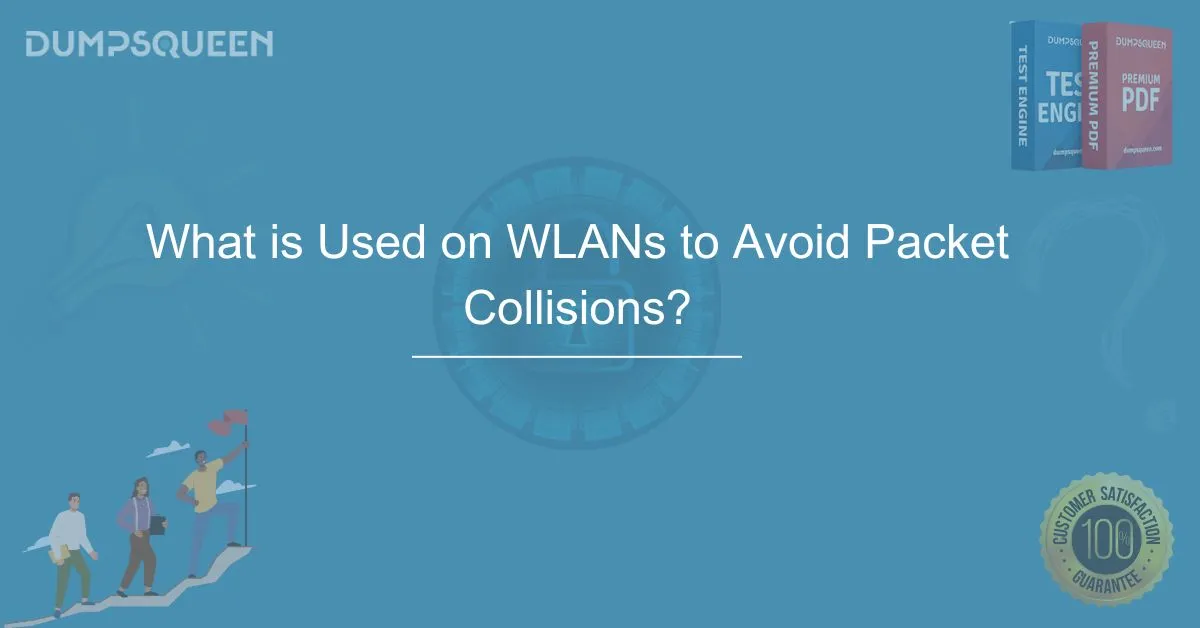Introduction
Wireless Local Area Networks (WLANs) have revolutionized the way we connect to the internet, providing seamless connectivity without the constraints of physical cabling. However, with the convenience of wireless communication comes the challenge of packet collisions, which can significantly impact network performance and reliability. Packet collisions occur when multiple devices attempt to transmit data simultaneously on the same wireless channel, leading to network congestion and data loss. To mitigate these issues, various technologies and protocols are employed to regulate access to the wireless medium efficiently. In this article, we explore the methods used in WLANs to avoid packet collisions, ensuring smooth and reliable communication.
Understanding Packet Collisions in WLANs
In wired networks, devices often use Carrier Sense Multiple Access with Collision Detection (CSMA/CD) to manage data transmissions and detect collisions. However, in wireless networks, collision detection is challenging due to the nature of radio waves. Instead, WLANs use Carrier Sense Multiple Access with Collision Avoidance (CSMA/CA) to prevent collisions before they happen.
Packet collisions in WLANs can degrade performance by causing delays, retransmissions, and reduced throughput. To address this, WLANs incorporate mechanisms such as:
-
Carrier Sense Multiple Access with Collision Avoidance (CSMA/CA)
-
Request to Send / Clear to Send (RTS/CTS) Protocol
-
Network Allocation Vector (NAV)
-
Dynamic Frequency Selection (DFS) and Transmit Power Control (TPC)
-
Quality of Service (QoS) Enhancements
CSMA/CA: The Backbone of Collision Avoidance
CSMA/CA is a fundamental protocol in WLANs that minimizes packet collisions by implementing a listen-before-talk approach. It works as follows:
-
A device checks if the wireless channel is free before transmitting data.
-
If the channel is busy, the device waits for a random backoff period before attempting to transmit again.
-
Once the channel is clear, the device sends data.
-
The receiving device sends an acknowledgment (ACK) upon successful reception.
By avoiding simultaneous transmissions, CSMA/CA significantly reduces the chances of collisions.
RTS/CTS Mechanism
To further reduce the likelihood of packet collisions, especially in environments with hidden nodes (devices that cannot directly hear each other), WLANs use the RTS/CTS mechanism. Here’s how it works:
-
The sender sends a Request to Send (RTS) signal to the receiver.
-
The receiver responds with a Clear to Send (CTS) signal if the channel is available.
-
Upon receiving the CTS, the sender proceeds with data transmission.
-
Other devices hearing the CTS signal defer their transmissions, minimizing collision risks.
Network Allocation Vector (NAV)
The NAV is a timer used in WLANs to help devices determine when the channel will be free. When a device detects a transmission, it updates its NAV timer to avoid interfering with ongoing communication. This mechanism helps coordinate access and prevents unnecessary retransmissions.
Dynamic Frequency Selection (DFS) and Transmit Power Control (TPC)
In high-density environments, interference can be a major issue. DFS and TPC are techniques used to optimize the wireless spectrum:
-
DFS: WLANs dynamically switch to less congested frequency channels when interference is detected.
-
TPC: Devices adjust their transmission power to reduce interference and optimize network performance.
Quality of Service (QoS) Enhancements
WLANs implement QoS mechanisms such as Wi-Fi Multimedia (WMM) to prioritize critical data, such as voice and video, over less time-sensitive traffic. By managing traffic priority, QoS ensures efficient bandwidth utilization and minimizes collisions.
Conclusion
To maintain reliable and efficient communication, WLANs use a combination of CSMA/CA, RTS/CTS, NAV, DFS, TPC, and QoS enhancements to avoid packet collisions. These mechanisms collectively optimize network performance by reducing congestion and improving data transmission efficiency. As wireless technology continues to evolve, advancements in collision avoidance techniques will further enhance the reliability of WLANs.
Free Sample Questions
1. Which protocol is primarily used in WLANs to prevent packet collisions? a) CSMA/CD
b) CSMA/CA
c) TCP/IP
d) ARP
Answer: b) CSMA/CA
2. What is the purpose of the RTS/CTS mechanism in WLANs? a) To increase data transmission speed
b) To reduce hidden node collisions
c) To encrypt wireless data
d) To allocate IP addresses
Answer: b) To reduce hidden node collisions
3. What does the Network Allocation Vector (NAV) do in a WLAN? a) It encrypts data packets
b) It prevents devices from transmitting during ongoing communication
c) It assigns IP addresses dynamically
d) It boosts wireless signal strength
Answer: b) It prevents devices from transmitting during ongoing communication



